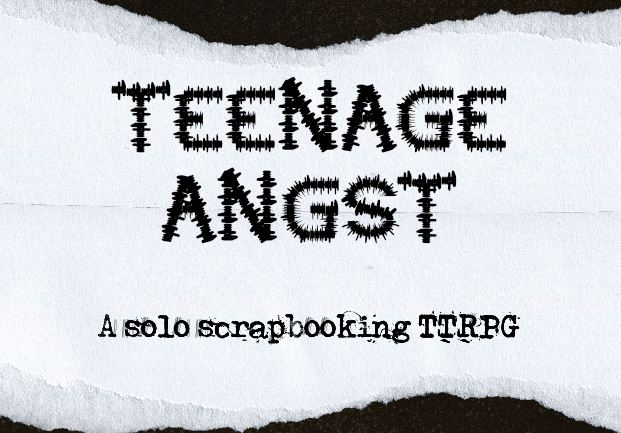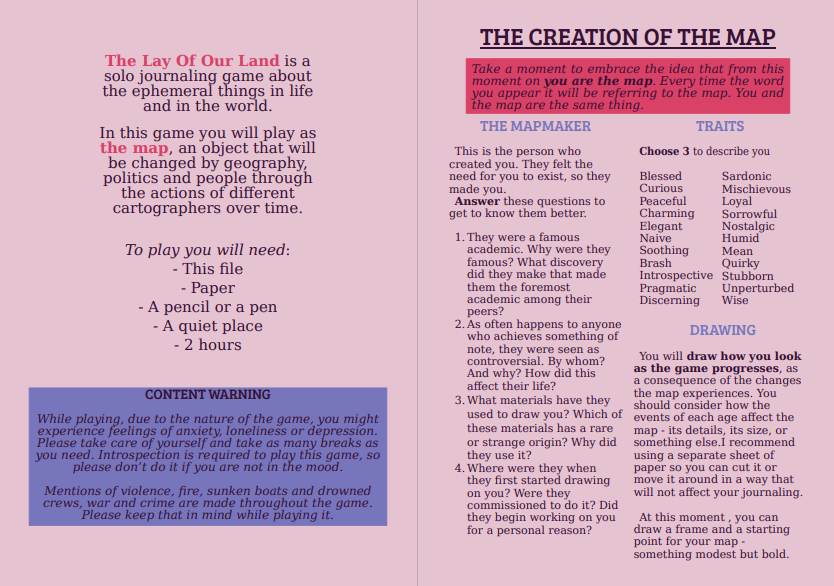
🧵🧵🧵RESOURCES, MECHANICS, TOOLS AND TIPS FOR DESIGNING SOLO GAMES
I'll put in this thread some useful material (hopefully) for those in need.
We'll start with SYSTEMS This is a selection of the most extended ones (there are more around, but this is a good place to start) 1/25
I'll put in this thread some useful material (hopefully) for those in need.
We'll start with SYSTEMS This is a selection of the most extended ones (there are more around, but this is a good place to start) 1/25
ALONE AMONG THE STARS is a solo ttrpg based on exploration and worldbuilding. Easy to hack, simple rules, with good variables to create over them 2/25 noroadhome.itch.io/alone-among-th…
SECOND GUESS SYSTEM is an SRD that focuses on discovering new things among the same things you've worked with and building upon that. Ideal for one-page ttrpgs 3/25 gamenomicon.itch.io/second-guess-s…
LAY ON HANDS SRD show as mechanics that might depend on the personal hand skills of the player, with lots of assets to use 4/25 alfredvalley.itch.io/lay-on-hands-s…
WRETCHED & ALONE is a system that is based on an unreliable narrator (the player) and where despair might be the main theme of the game 5/25 sealedlibrary.itch.io/wretched-alone…
CARTA SRD is a system that uses space to represent exploration over a surface with a grid of cards. Ideal for delving 6/25 peachgardengames.itch.io/carta-srd
LOST & FOUND is built to make games about objects, in which you need to answer questions from its perspective. 7/25 srd.mousehole.press
THREAD OF LACHESIS is a system to create acts and moments through a playthrough, with many chances of not repeating prompts 8/25 pandiongames.itch.io/threadsoflache…
Now we'll talk about tools/mechanics that can be used. Oracles, Tables, Dice, and all of those things
For oracles, the most extended tools used are DECK OF CARDS 9/25
For oracles, the most extended tools used are DECK OF CARDS 9/25
A STANDARD DECK has 52 cards + jokers. You can make a prompt for each card so when turn it you get to use it, give special roles to certain cards to finish the game or relate a suit to a certain aspect. Among many other things. You can even use the jokers or not, too. 10/25
In general, to keep a cohesive sense on what you can expect from the prompt when you get the card, you'll have a general theme for each suit and then a particularity for the number. You can make 2 decks, from number cards and figure cards, for example, for different things. 11/25
TAROT CARDS are wildly spread too since they have a much more complex meaning that can be used for the games. Just use the Major Arcana (22 cards) and some use both Major and Minor (78 in total). You can use the suits of the minor arcana too for different aspects. 12/25
Some people even use regular tarot reading spreads for their games, not just the cards. Tarot cards also can add another variation since their meaning changes by being reversed or not. 13/25
DICE is also used in many aspects of games. It can be used for you to pick an item from a RANDOM TABLE. Or to determine how good or bad a thing is according to the number you get. You can also have many rolls to do to get more complex results and info for your journaling 14/25
JOURNALS is a widespread medium to report the advances of your game. There's no secret here, but I like to say that this can be done by recording yourself talking, by writing, by taking notes, by typing on your cellphone, whatever works for you. 15/25
TABLES are a good way to randomize your results as well. You can get as many as you want to build up a scenario or prompt to act upon. It can be as concrete or abstract as you wish. 16/25
COINS are also used to determine 50-50 situations. You can use them as guidance for the player on how to take a prompt, or on doing certain things because of where it falls or how. 17/25
QUESTIONNAIRES is a way of advancing stories as well or creating characters and places. You can give some options to players, or you can give a randomizer tool for the answers, or just leave them open. 18/25
Here's an ARTICLE that's useful to see how a solo game designer sees the player, how that relationship works, how is different from group ttrpgs 19/25 medium.com/@skelerot/writ…
This is a virtual cards randomizer in which you can upload your own prompts to each card if necessary 20/25 sissyfist.itch.io/virtual-card-o…
For some tips, I can just talk about my experience: to start, going small is better: a simple idea, with a simple mechanic, a defined theme and mood, and relate everything together. It doesn't have to be a complex game to be good. 21/25
If you get an idea, always think about what you want to transmit through the gameplay. Is it a wholesome game? Is it a hopeless game? Is it an introspective game? Is it an expansive game? Do I wanna focus on worldbuilding? Make an interesting character? An amazing story? 22/25
Once you have that, imagine what kind of mechanic and tools would deliver that idea the best way. Or if it's the other way round, you're in love with a mechanic, what theme would be good for this? what does this mechanic generate in players? 23/25
give yourself room to NOT finish a game: everything you design DON'T have to be finished or published. You might have a wonderful theme or mechanic that you're not ready to explore in full, that you might find difficult to develop and it's fine, keep it safe for the future 24/25
PLAYTEST your games: one might think that since it's a solo game, what can go wrong? But if you have to fill a track, how many spaces are correct? Would this be a long game? Would it be short? Are the rules clear? Do I need to add examples of play? 25/25
These are just some tips and tools that have helped me somehow. You can always work on adapting a group ttrpg to a solo play mode. And tbh, you can do whatever you want. This is just a general idea, some stuff that might point you in a direction to get started!
Also, I'm human, if I haven't put here a wonderful resource you have created, I might 1) have forgot about it 2) don't know it. Feel free to add it here!
• • •
Missing some Tweet in this thread? You can try to
force a refresh














